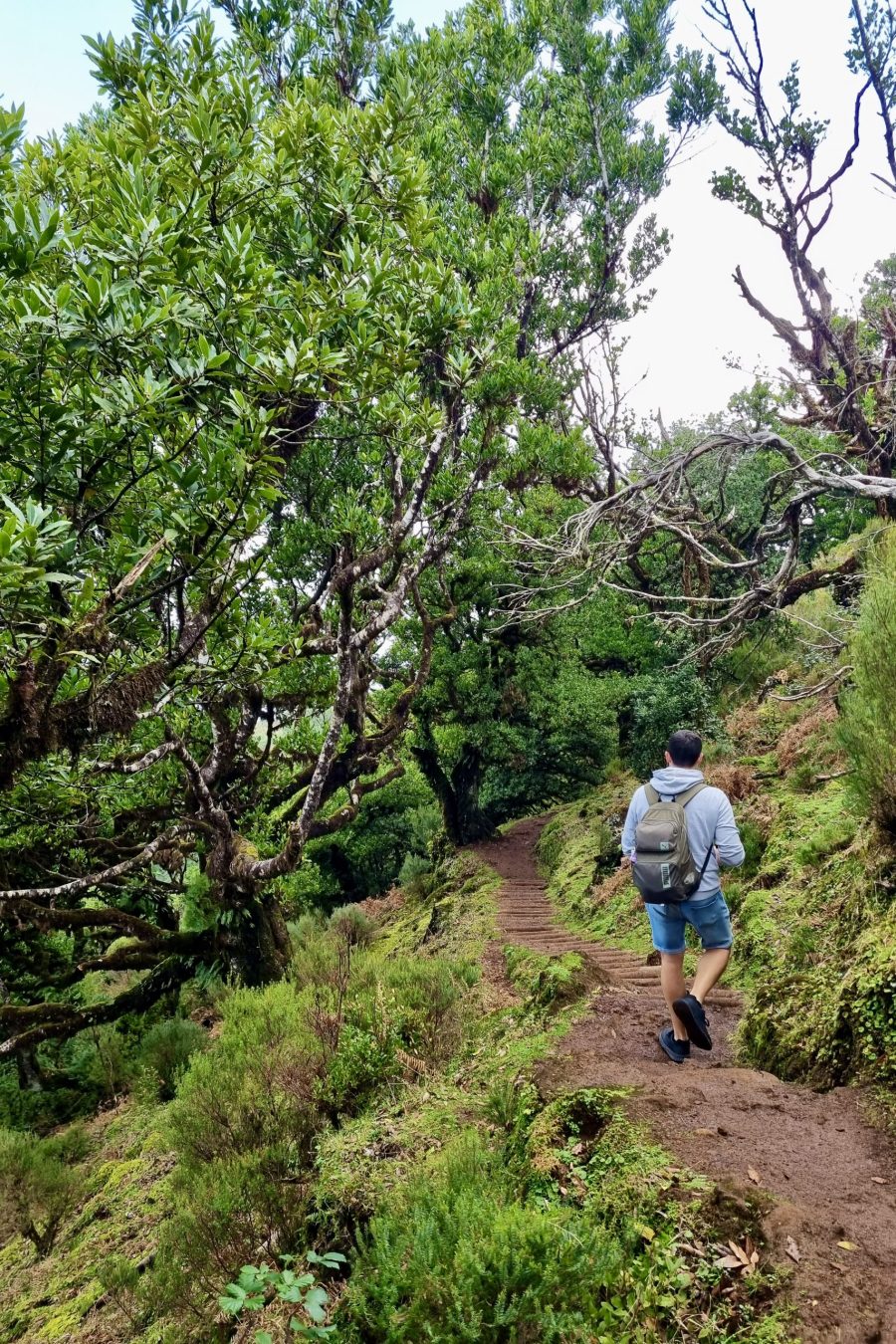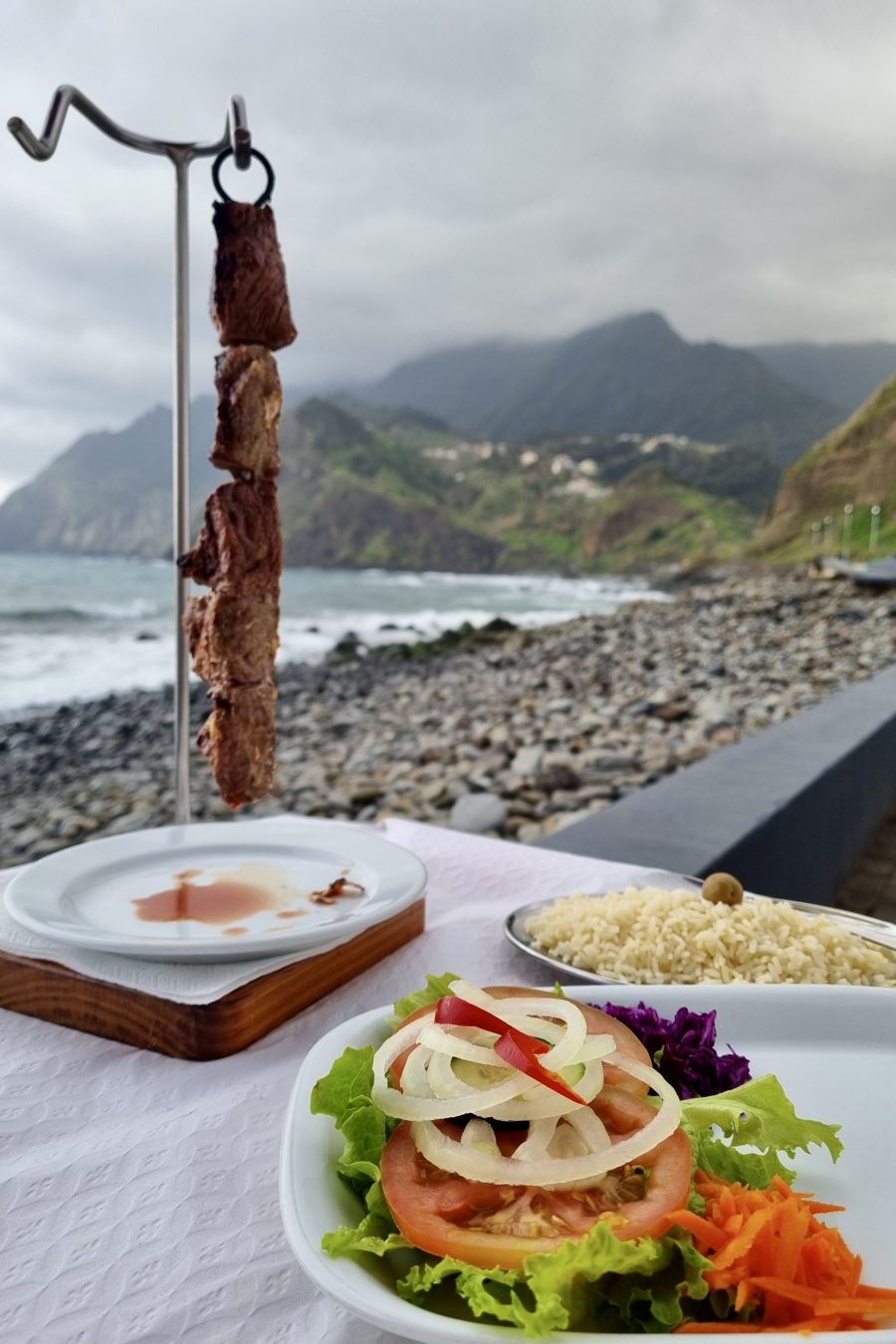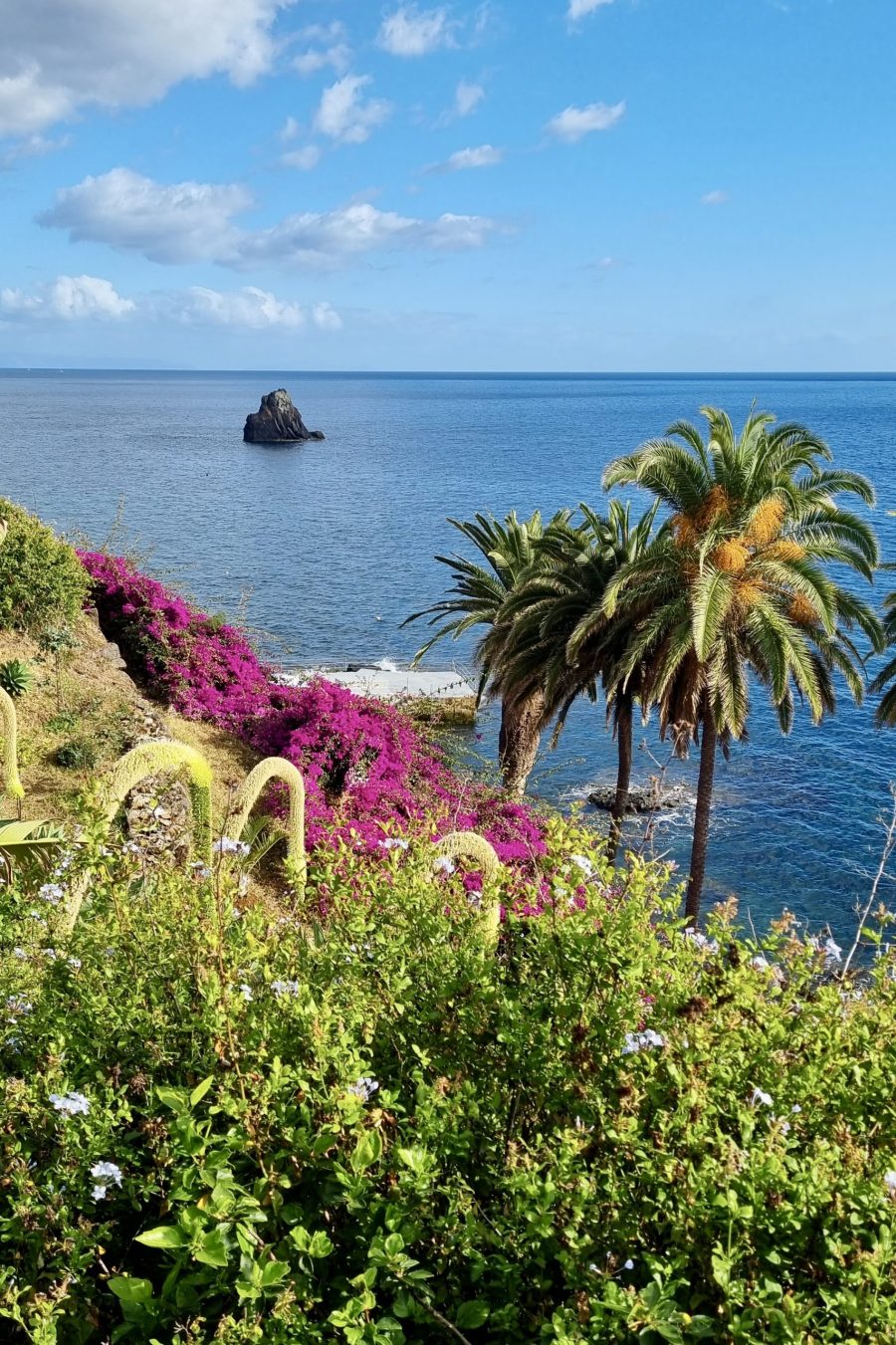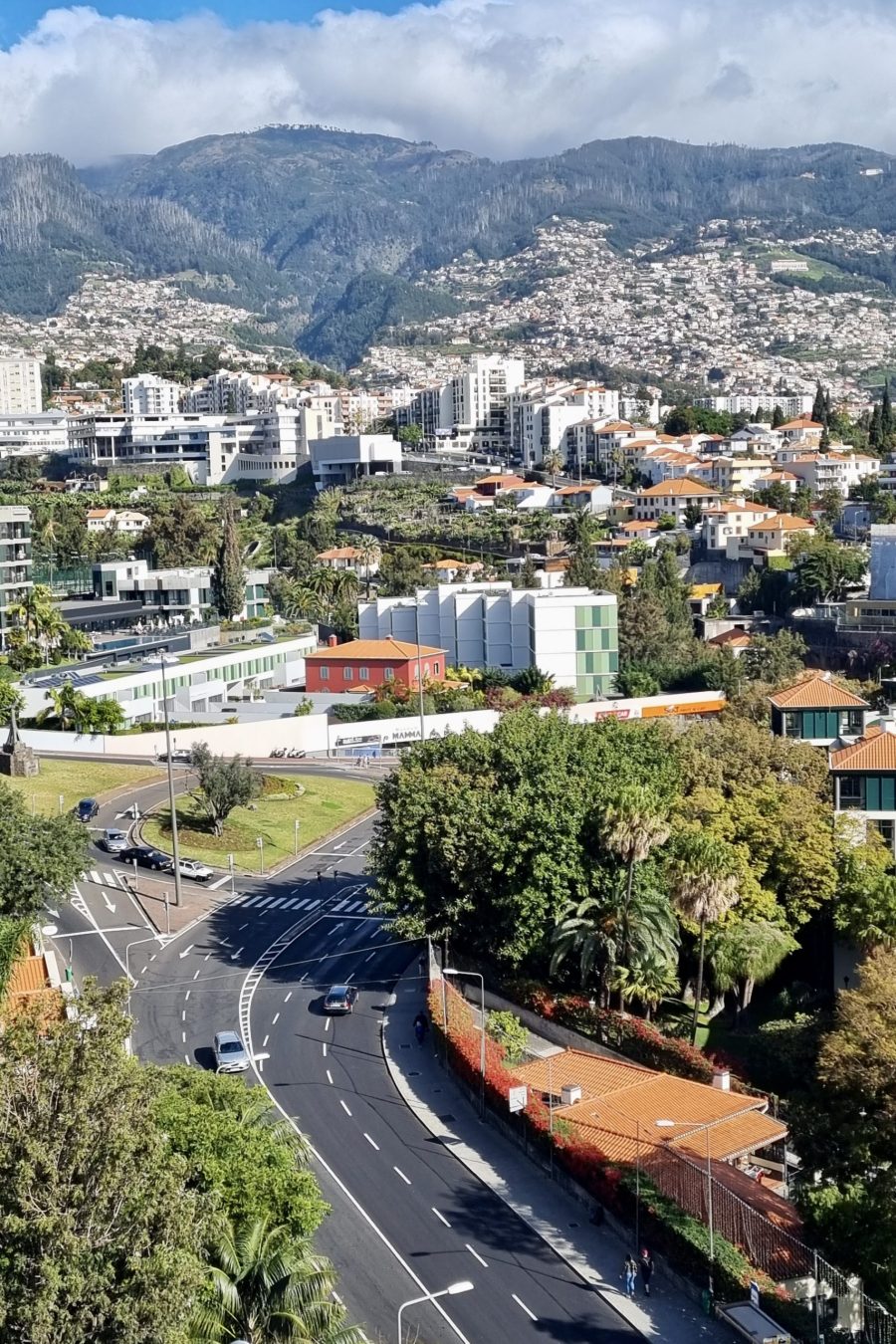In October, our family embarked on a journey to explore the less-traveled roads of Northern Cyprus, setting our sights on the enchanting city of Kyrenia, known locally as Girne.
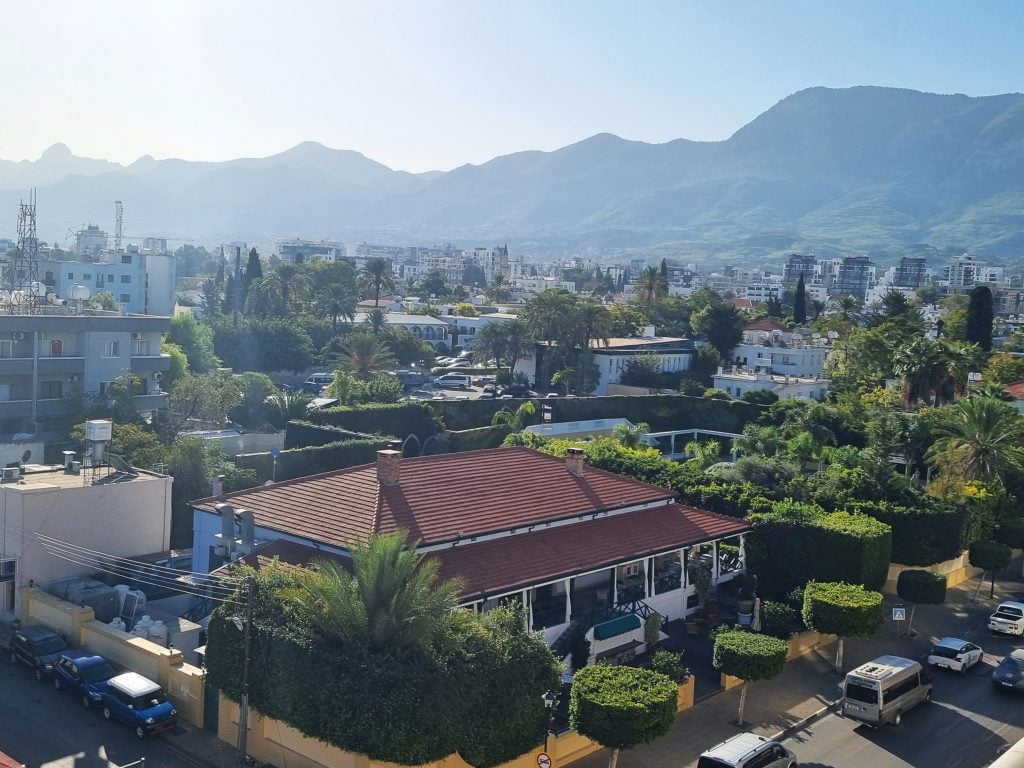
Nestled on the northern coast, Kyrenia stands as a testament to the island’s tumultuous history, a crossroads of civilizations and cultures. Despite its complex past, marked by the division of the island into the Republic of Cyprus and the Turkish Republic of Northern Cyprus in 1974, Kyrenia remains a gem waiting to be discovered, its historic harbor and imposing castle whispering stories of ancient shipwrecks and bygone empires.
A Short History of the Division of Cyprus
The division of Cyprus occurred in 1974 following a Greek Cypriot coup attempt that aimed to unify the island with Greece. This prompted a Turkish military intervention to protect the Turkish Cypriot minority. Consequently, the island was split into the Greek Cypriot-controlled south and the Turkish-occupied north, later declared the Turkish Republic of Northern Cyprus in 1983, recognized only by Turkey. A UN-patrolled buffer zone, known as the Green Line, separates the two areas to this day.
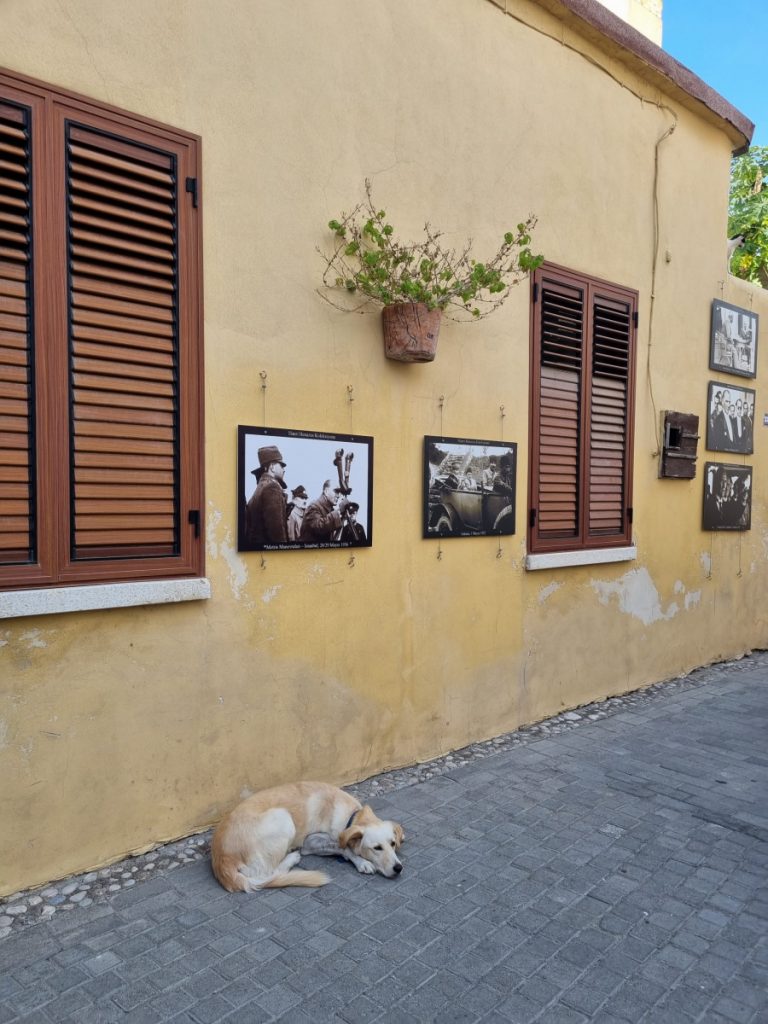
Nicosia, the capital of Cyprus, is uniquely known for being the last divided capital in the world. After the island’s division in 1974, the city was split into southern Greek Cypriot and northern Turkish Cypriot sectors, separated by a UN-patrolled Green Line running across the heart of the city. In Nicosia, there is a crossing point which facilitates movement between the Northern and Southern parts of Cyprus, reflecting the city’s role as both a symbol of division and a bridge between communities.
Discovering the Untouched North: Our Family’s First Expedition to Girne(Kyrenia), Cyprus
Our family holds a deep affection for Cyprus, visiting the island several times a year. However, we had never ventured to Northern Cyprus, so this time we decided to explore this uncharted part of the island. For our inaugural journey, we chose Girne, the most renowned city in Northern Cyprus.
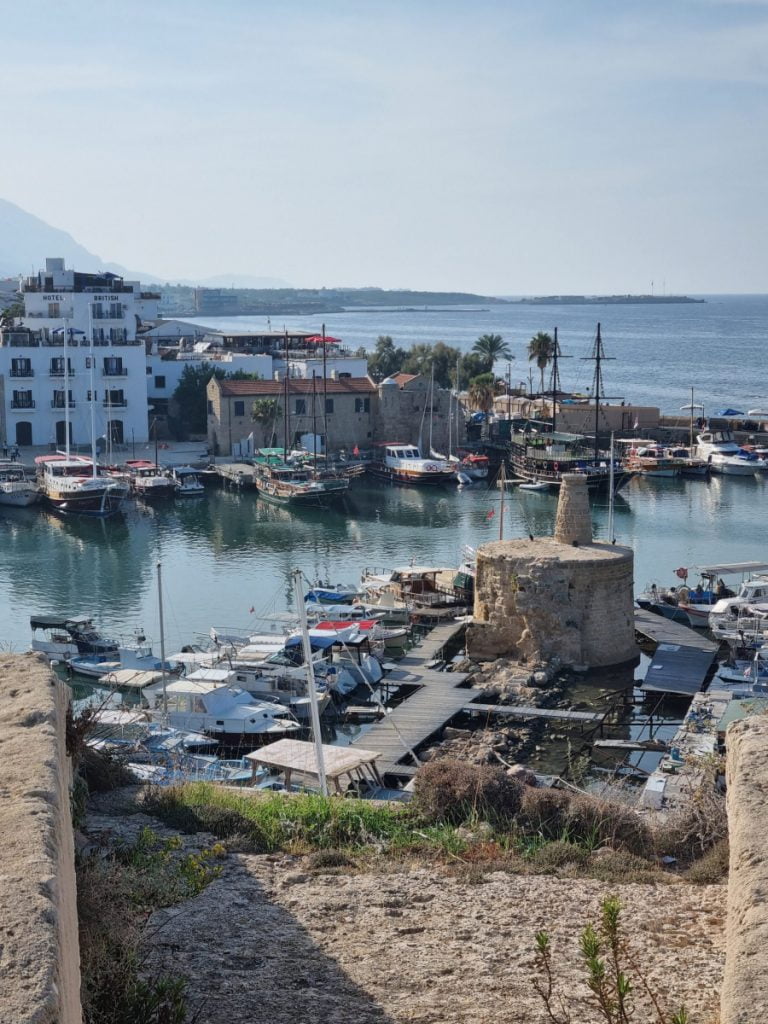
Just beyond the crossing point, we found a currency exchange with favorable rates and no commission, where we changed our money. Although card payments are widely accepted here, we needed cash for the bus fare to the city of Girne (Kyrenia).
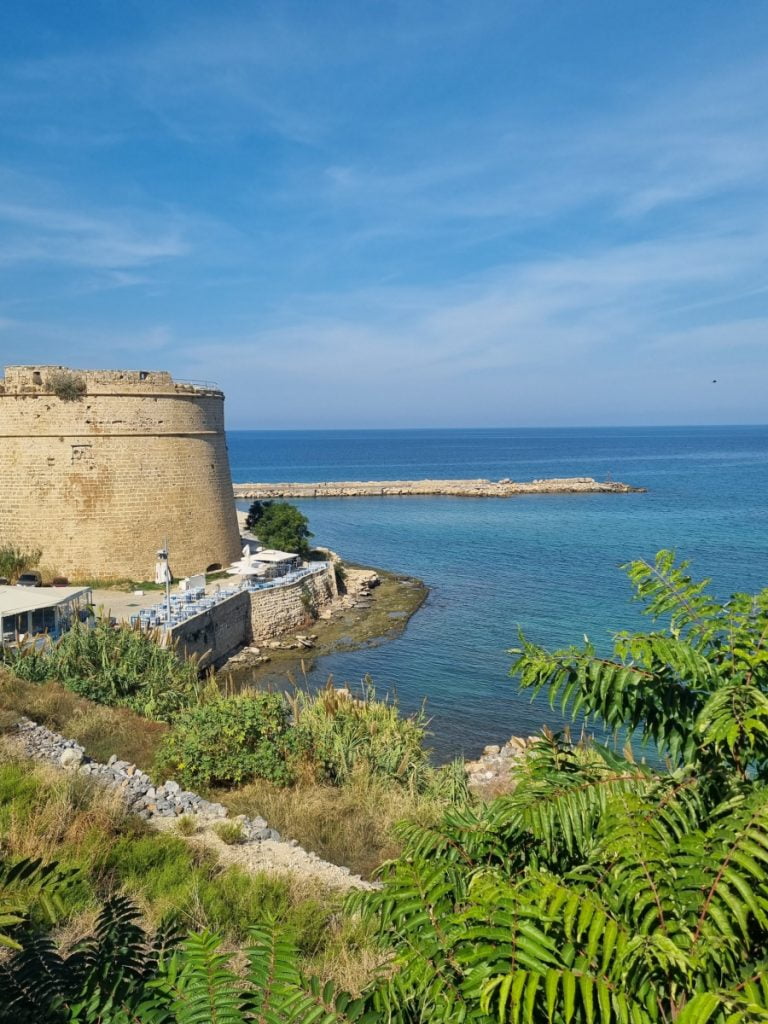
After the checkpoint, a 15-minute walk led us to the pickup spot for minibuses, located near the Atatürk Monument on Cemal Gürsel Street, nestled under the trees. The fare was 70 Turkish Lira. However, a taxi driver with a 9-seater offered us a quicker ride, collecting a few more passengers en route, and took us directly to Girne in half an hour for 60 Turkish Lira per person.
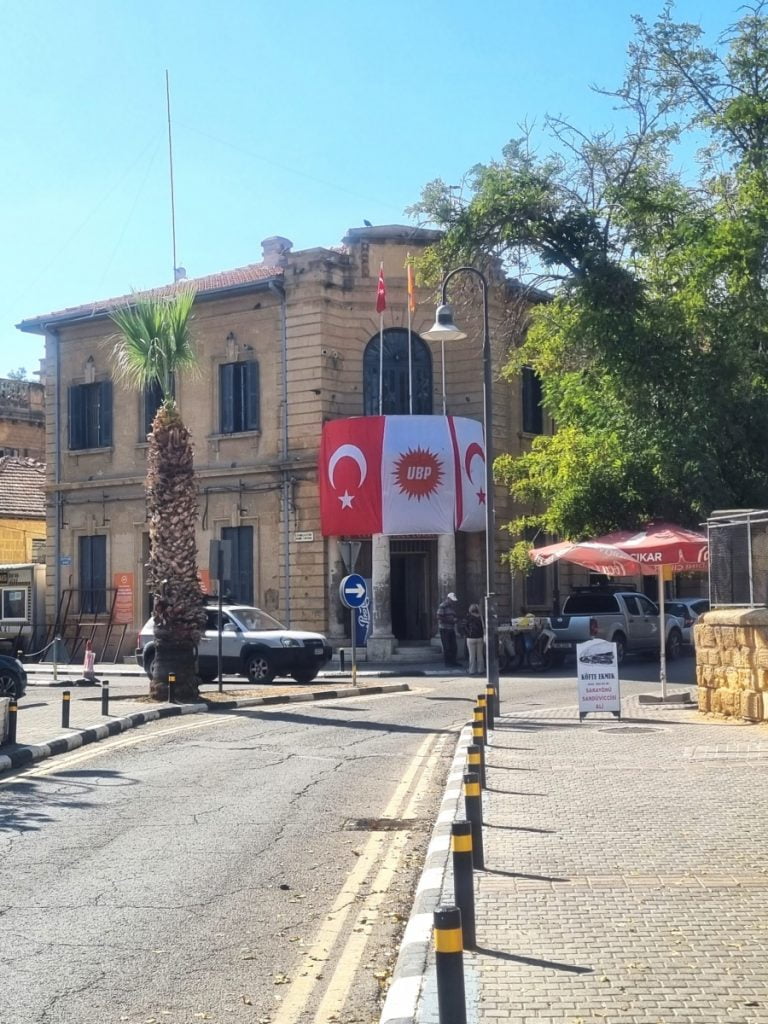
Central Comfort in Girne(Kyrenia): Our Experience at The Colony Hotel Arkin
We selected a centrally located hotel. The Colony Hotel Arkin, located in the heart of Kyrenia, Northern Cyprus, is a distinguished five-star hotel that seamlessly combines old-world charm with modern luxury. This hotel stands out for its colonial-style architecture and sophisticated interior design, making it one of the most visually appealing establishments in the area.
Accommodations: The hotel offers a range of accommodations, from standard rooms to opulent suites. Each room is elegantly furnished, blending classic and contemporary styles, and equipped with amenities like air conditioning, satellite TV, and Wi-Fi. The suites offer added luxuries such as separate living areas and expansive bathrooms.
Dining: Guests at The Colony Hotel Arkin have multiple dining options. The hotel’s main restaurant serves a variety of international and local cuisines, crafted by skilled chefs. For lighter meals or afternoon tea, the lounge area provides a relaxed setting. The rooftop bar and restaurant offer breathtaking views, making it a perfect spot for enjoying a meal or cocktail.
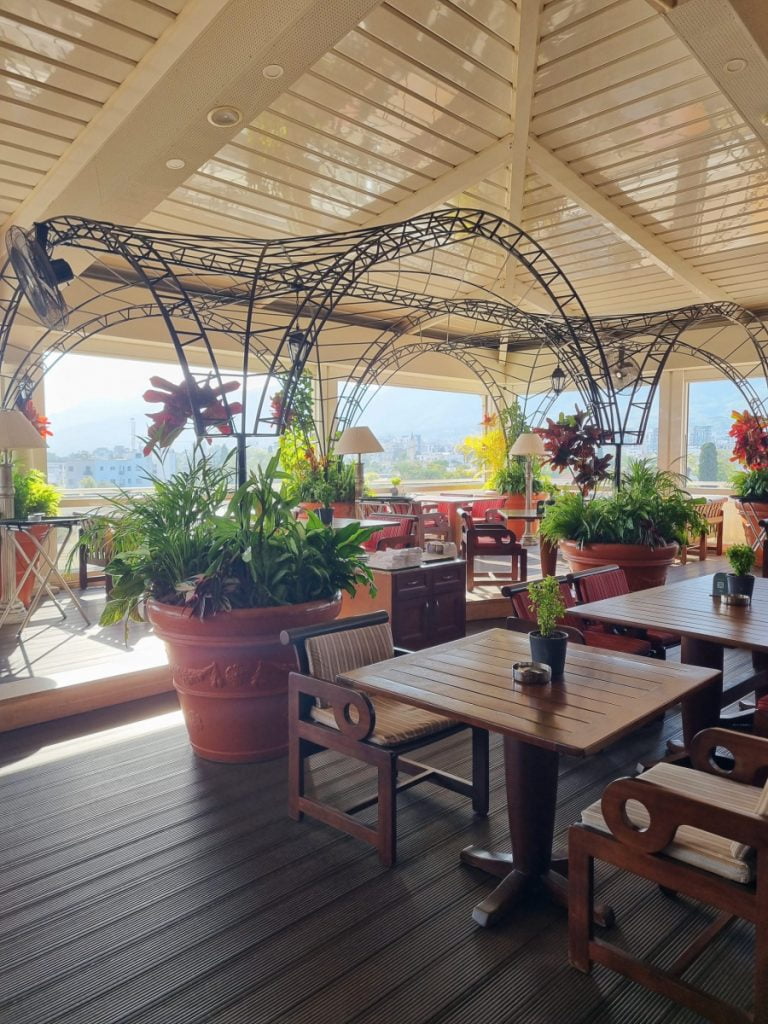
Facilities and Services: The hotel boasts a rooftop swimming pool, providing a serene oasis with panoramic views of the city and the Mediterranean Sea. For wellness and relaxation, the hotel offers a spa with a range of treatments, a sauna, and a fitness center.
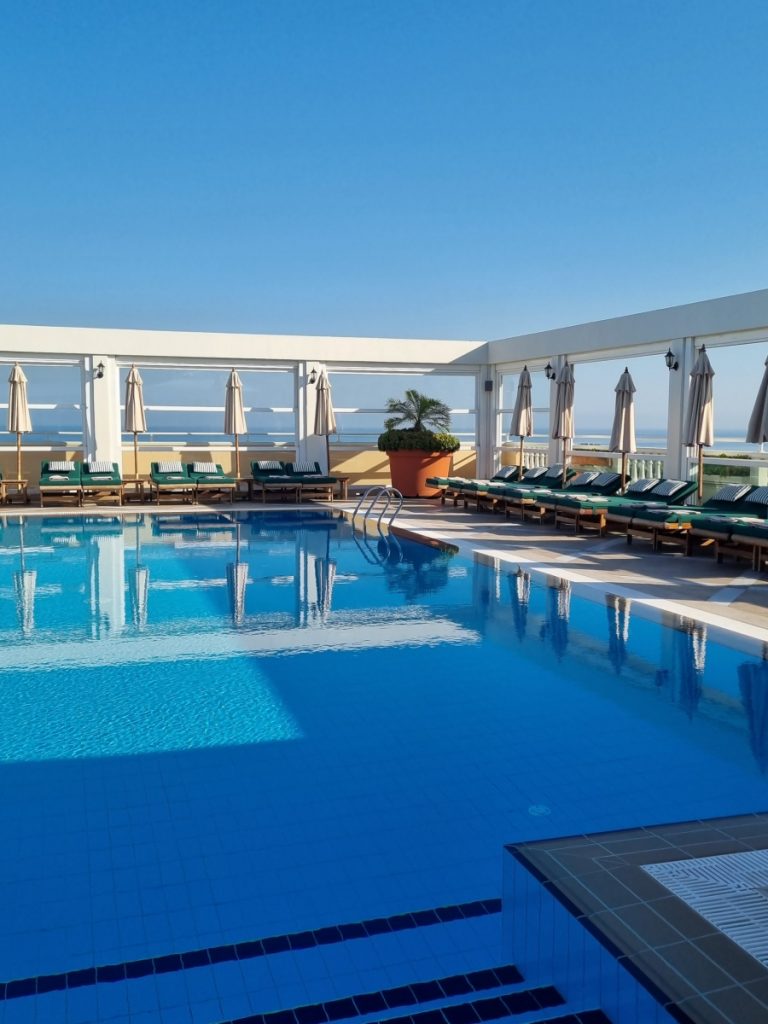
Entertainment: One of the hotel’s key attractions is its in-house casino, which offers a variety of games including slot machines and table games, catering to both novice and experienced gamblers.
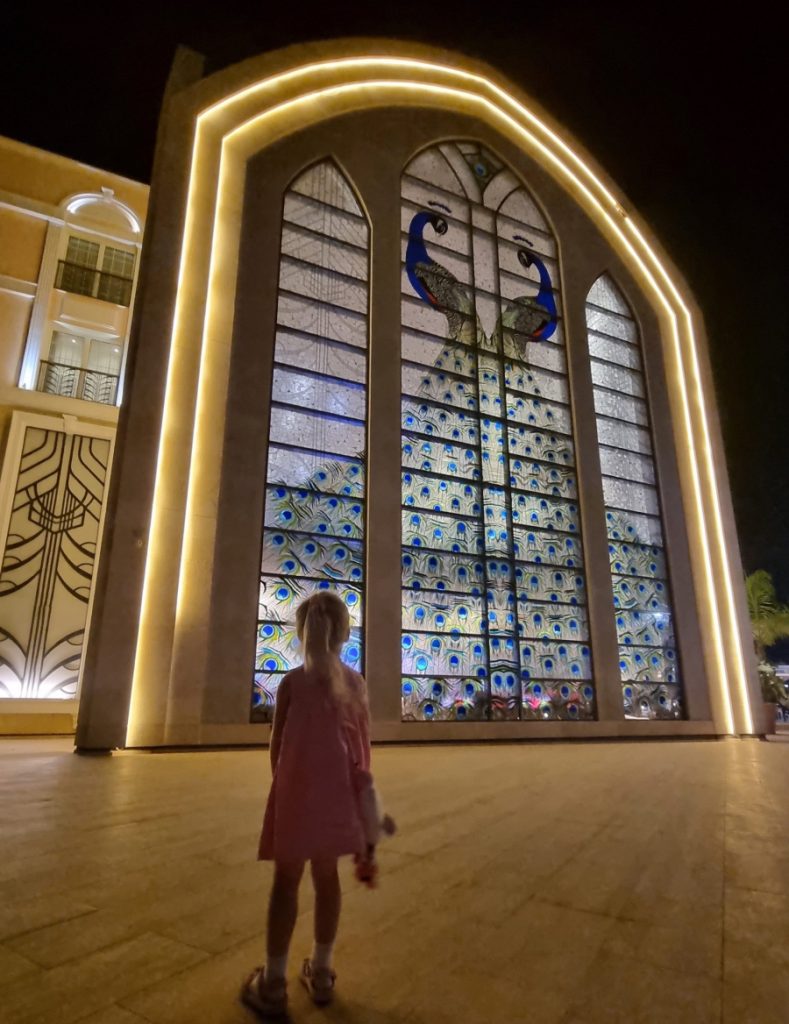
Location: Situated in the center of Kyrenia, the hotel is conveniently located near many of the city’s attractions, including the historic Kyrenia Harbour and Castle. Its central location makes it easy for guests to explore local shops, restaurants, and cultural sites.
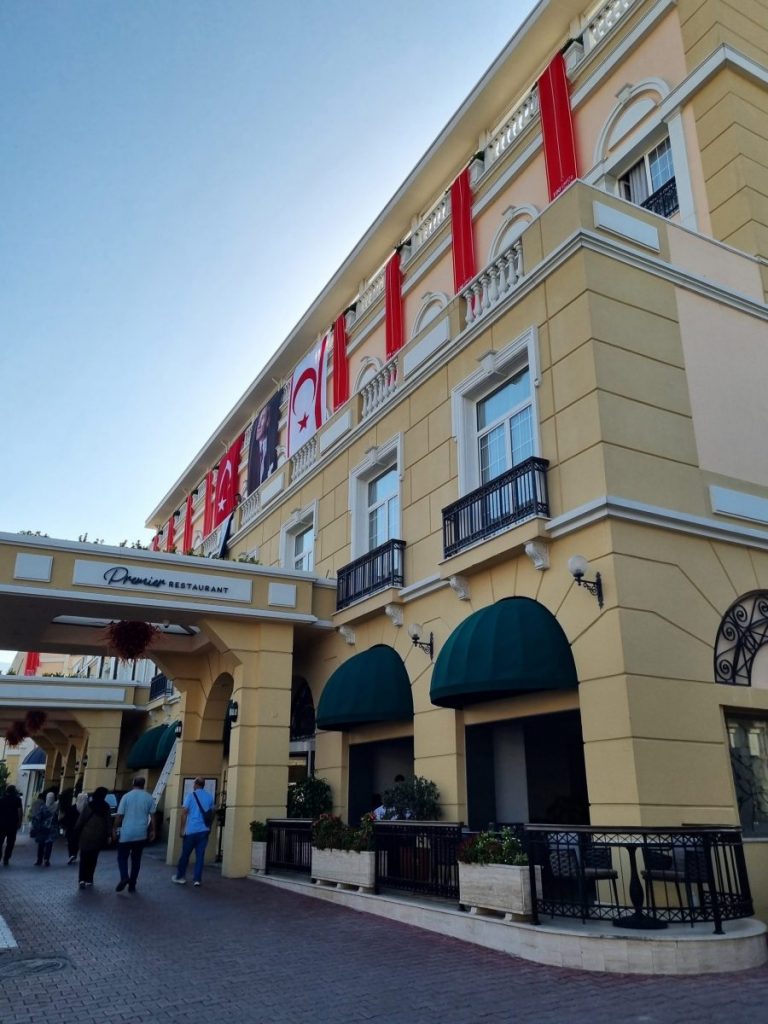
Service: The Colony Hotel Arkin is noted for its high level of service, with a friendly and attentive staff ready to assist with guests’ needs, from arranging local tours to providing room service.
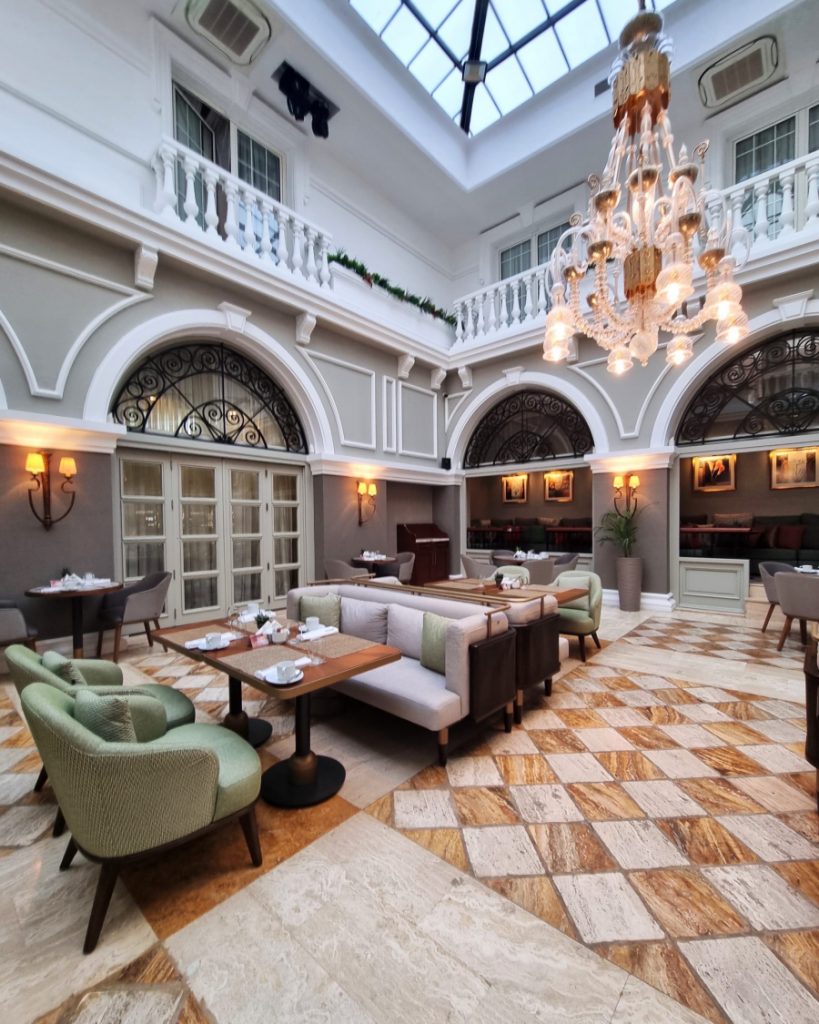
The Colony Hotel Arkin is a blend of historical elegance and modern luxury, offering guests a comfortable and memorable stay in Northern Cyprus with its exquisite rooms, diverse dining options, leisure facilities, and prime location.
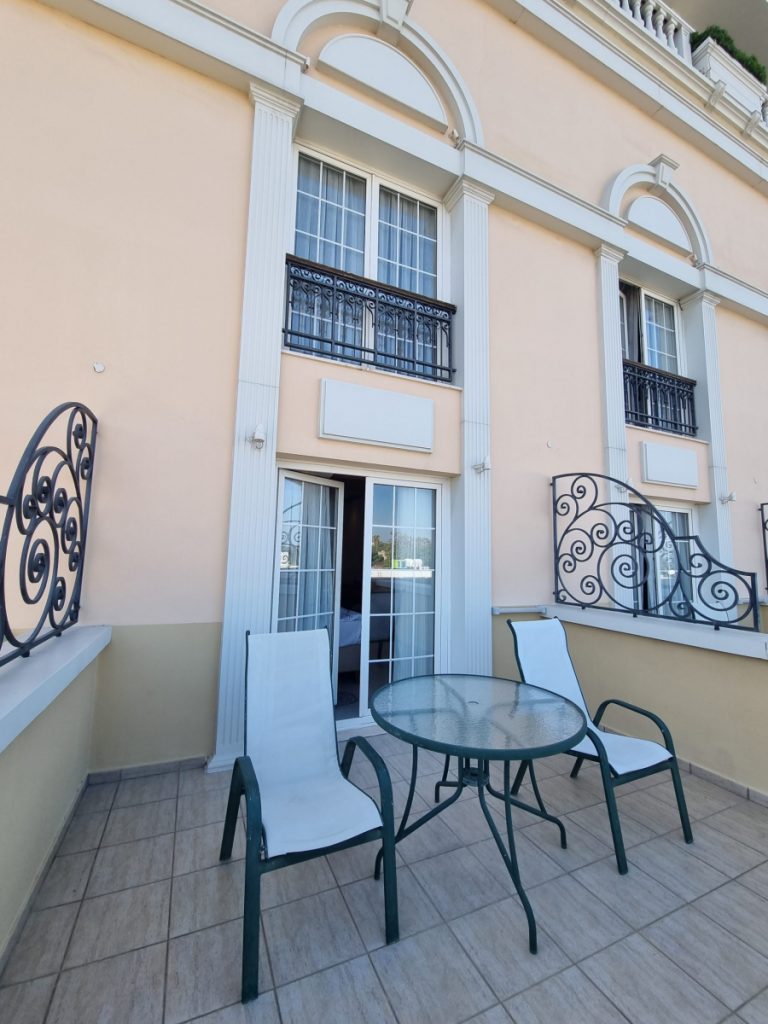
Discovering Northern Cyprus: A Guide to the Must-Visit Sites
In the Turkish part of Cyprus, notable attractions include:
- Kyrenia Castle: A historic fortress with a rich past, offering panoramic harbor views.
- Bellapais Abbey: A stunning Gothic abbey in the village of Bellapais, offering peace and spectacular views.
- Salamis: An ancient city-state with extensive ruins, including a theatre and Roman baths.
- St. Hilarion Castle: A fairy-tale-like castle atop the Kyrenia mountain range, which inspired Walt Disney.
- Apostolos Andreas Monastery: A significant religious site for Orthodox Christians.
- The Walled City of Nicosia: Steeped in history, it’s a place to wander through narrow streets, visit the Buyuk Han, and see the Venetian walls.
- Karpaz Peninsula: Known for its wild donkeys and beautiful, untouched beaches.
- Famagusta: A city known for its walled historical center and the haunting, abandoned Varosha district.
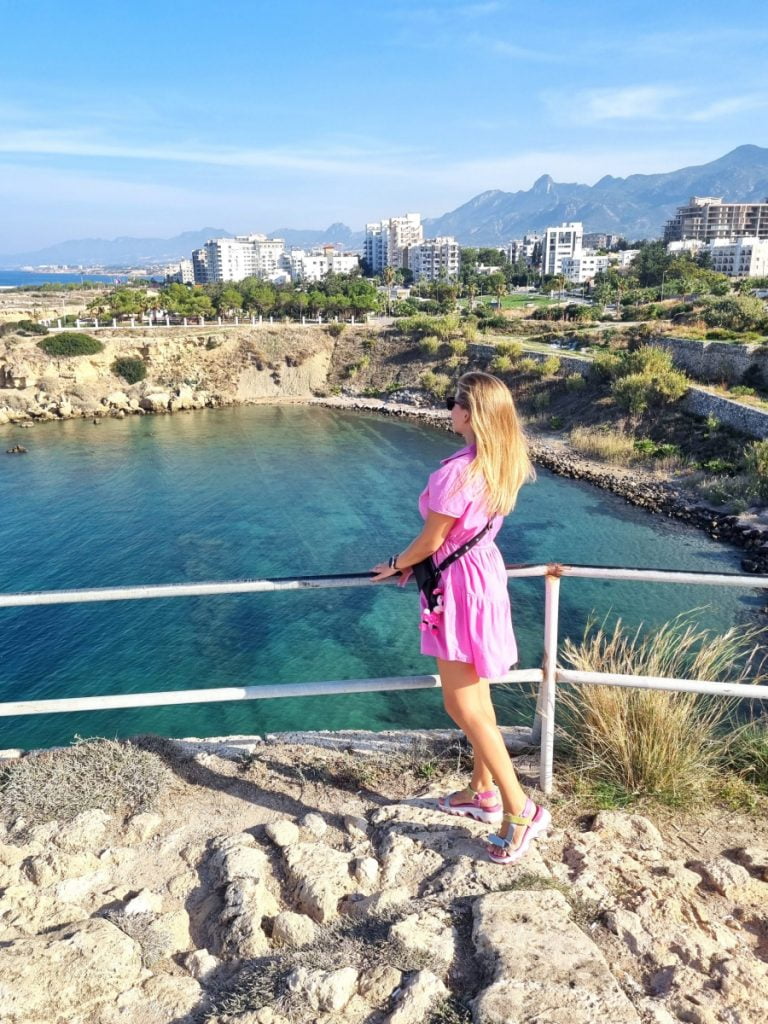
Turkish Cypriots: A Culture of Warmth, Cuisine, and Conviviality
Turkish Cypriots are renowned for their warm character, ever-present smiles, and engaging conversations. As inhabitants of Northern Cyprus, they cherish their cultural heritage, which is evident in their cuisine.
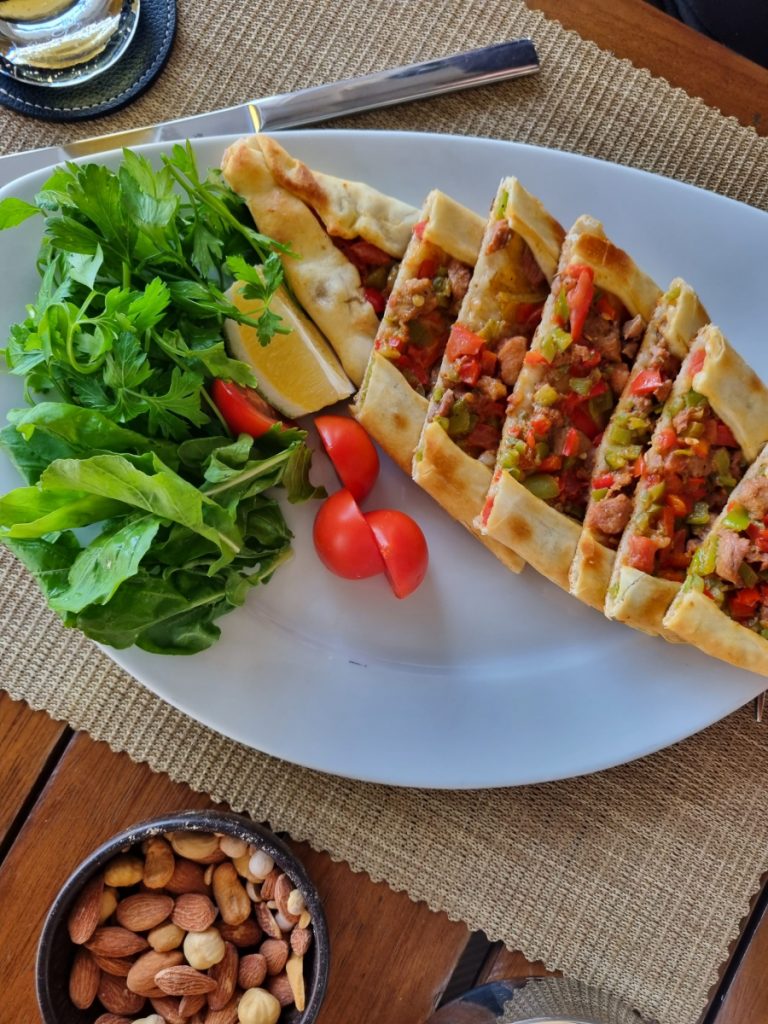
Some favorite dishes include “molehiya” (a green leafy vegetable stew), “şeftali kebab” (a unique sausage-like kebab), and “hellim” (halloumi cheese). Traditional drinks often feature Turkish tea and coffee, known for its rich aroma and distinctive preparation method.
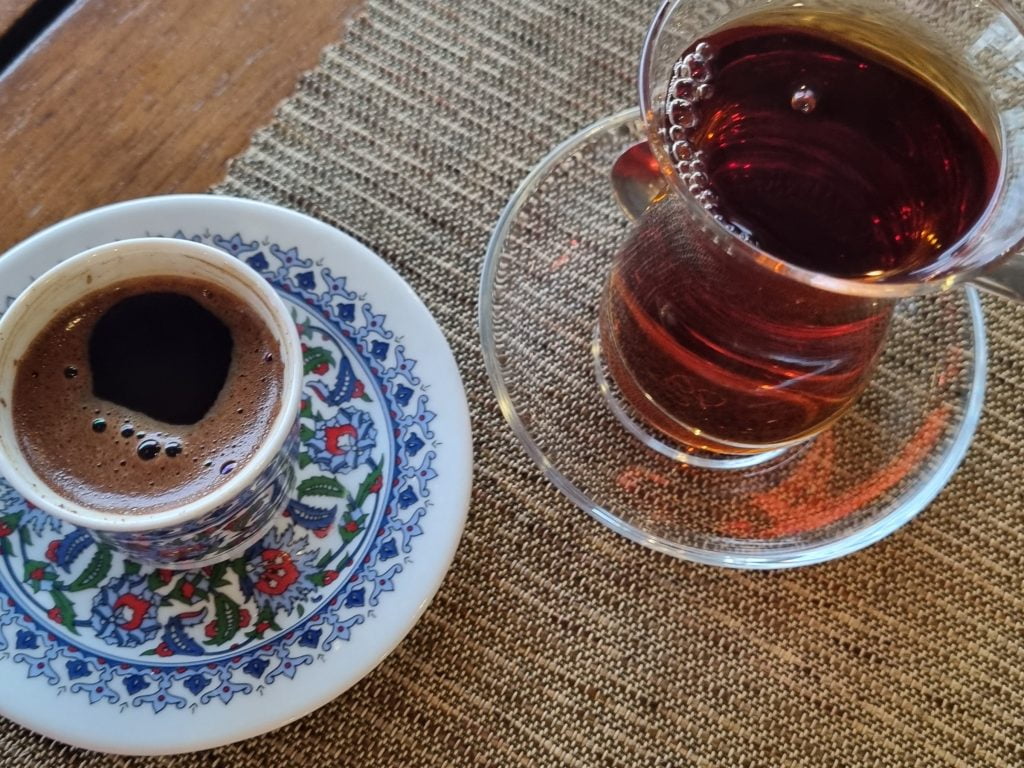
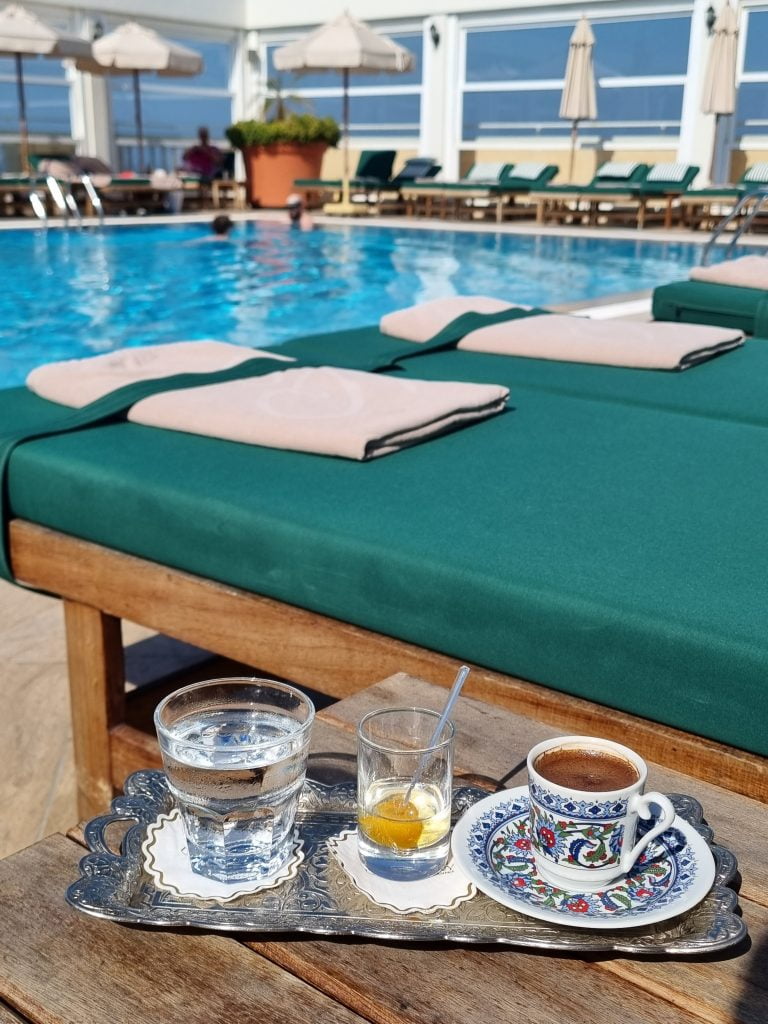
Sweets and pastries hold a special place in Northern Cyprus. Baklava, with its layers of flaky pastry, nuts, and sweet syrup, is a favorite treat. Other popular confections include “şekerpare” (soft cookies soaked in syrup) and “lokma” (fried dough balls also drenched in syrup). For savory options, “börek” (filled pastry) comes in varieties stuffed with cheese, meat, or vegetables. These delights are a testament to the island’s love for rich flavors and traditional baking.
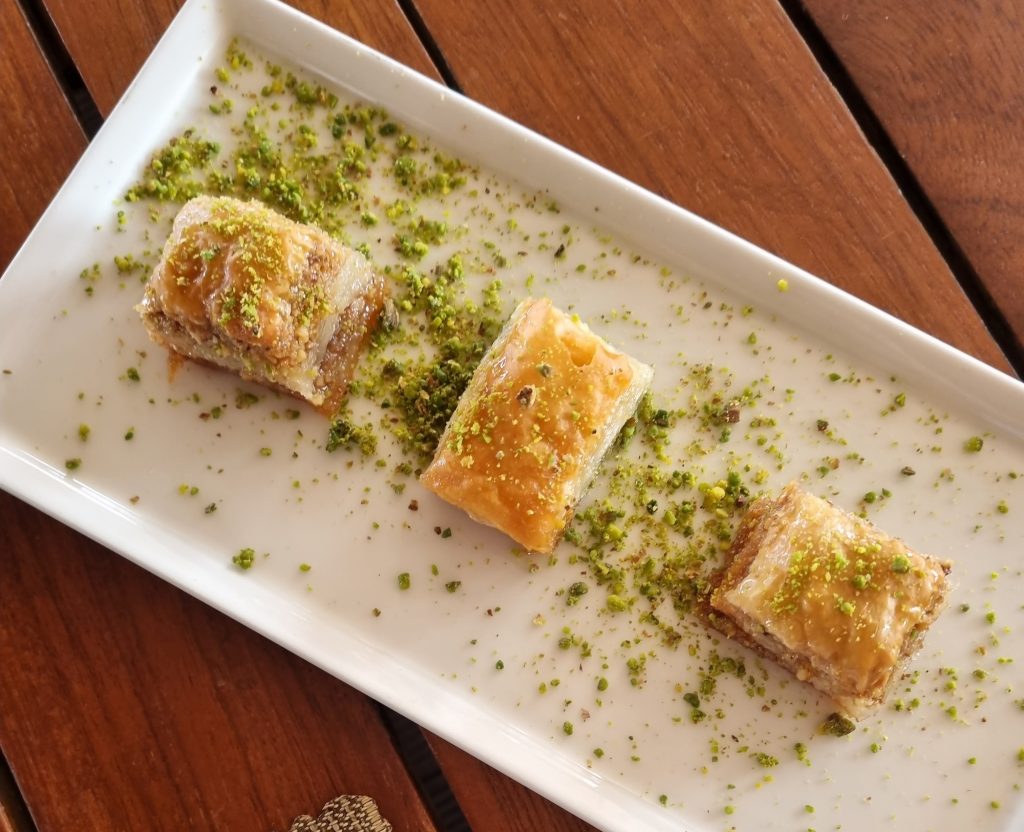
In the Turkish part of Cyprus, spices are a culinary staple, both in markets and at the table. Spices are sold in vibrant, fragrant heaps at local bazaars, inviting passersby to add flavor to their own kitchens. In restaurants, it’s common to find a selection of spices served separately, allowing guests to season their dish to taste.
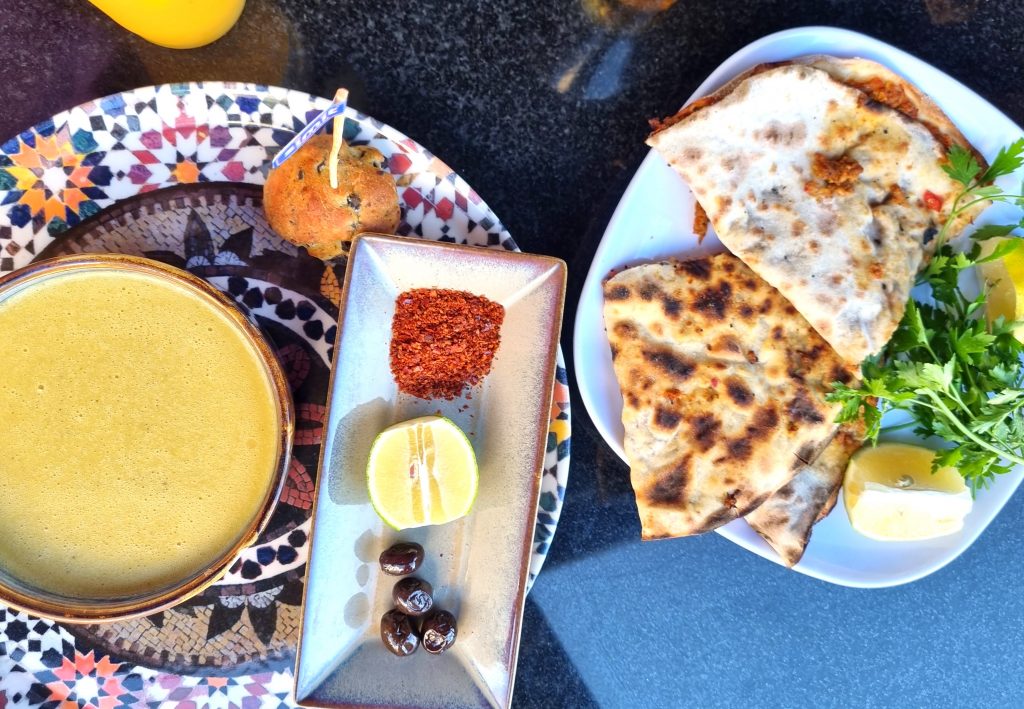
This practice caters to individual preferences and enhances the dining experience, adding a personal touch to the rich and varied flavors of Turkish Cypriot cuisine.
Northern Cyprus: A Symphony of Flavors, Friendliness, and Unforgettable Scenes
In our trip to Northern Cyprus, we were charmed by the warmth of the locals, the delicious and varied cuisine including dishes and sweets. The quaint streets of old towns exuded the enticing aromas of freshly brewed coffee and pastries. Dogs and cats coexisted amiably on the streets.
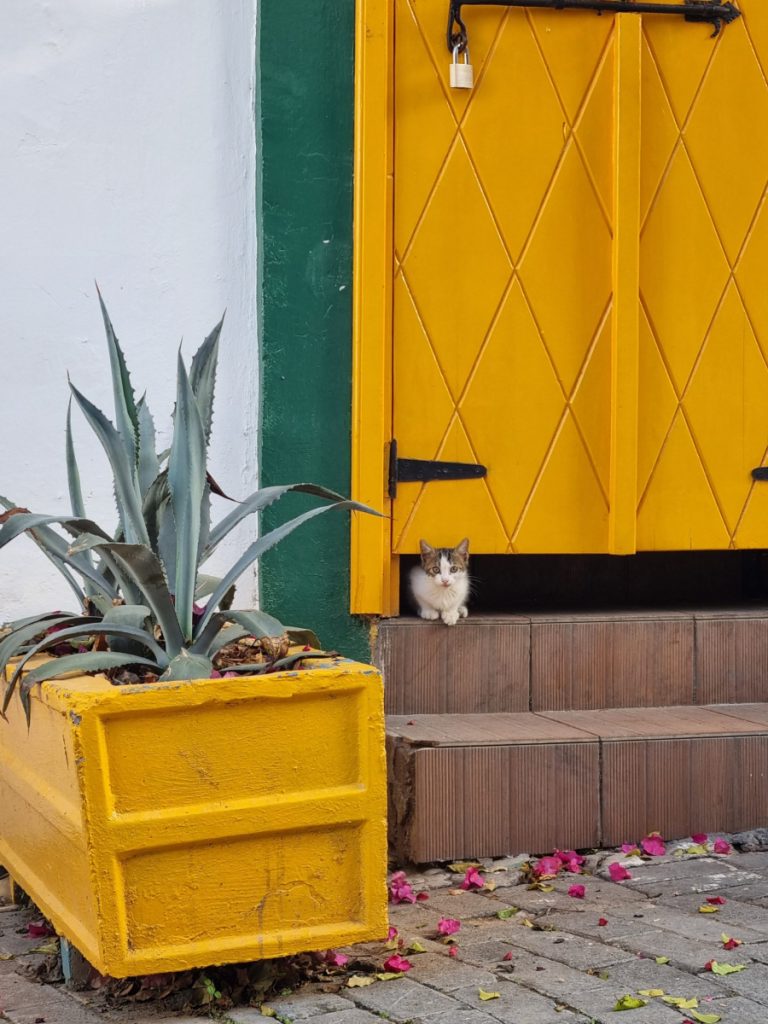
We were surrounded by stunning landscapes, mountains, and verdant greenery, and we had the opportunity to take a sunset cruise on the warm sea. Additionally, friendly vendors on the streets offered freshly squeezed juices at very reasonable prices; pomegranate juice quickly became our favorite.
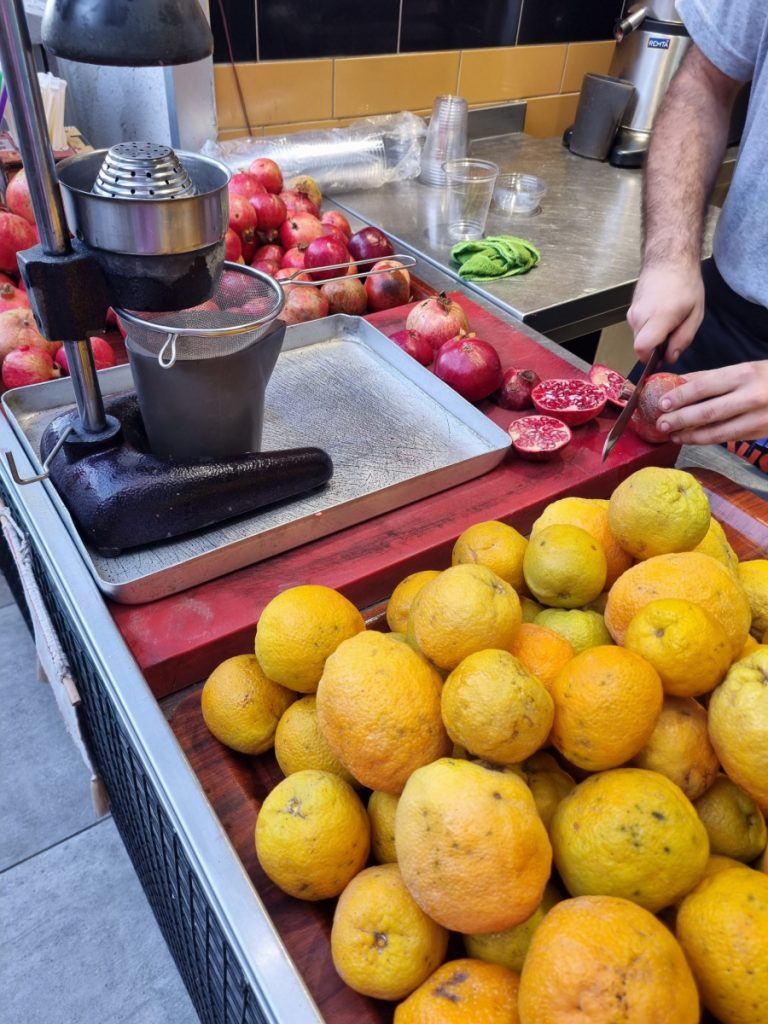
The Greek and Turkish parts of Cyprus differ in various aspects, from language and culture to cuisine and religious traditions. While the Greek Cypriot side is deeply rooted in Greek Orthodox customs, the Turkish Cypriot north reflects a blend of Middle Eastern and Turkish influences.
Despite these differences, both share a love for the island’s beauty, a rich historical tapestry, and the warmth of its people. To truly embrace the essence of Cyprus and its complex history, we recommend visiting both the Greek and Turkish sectors. Each offers a unique perspective and together, they provide a fuller understanding of the island’s multifaceted identity.

